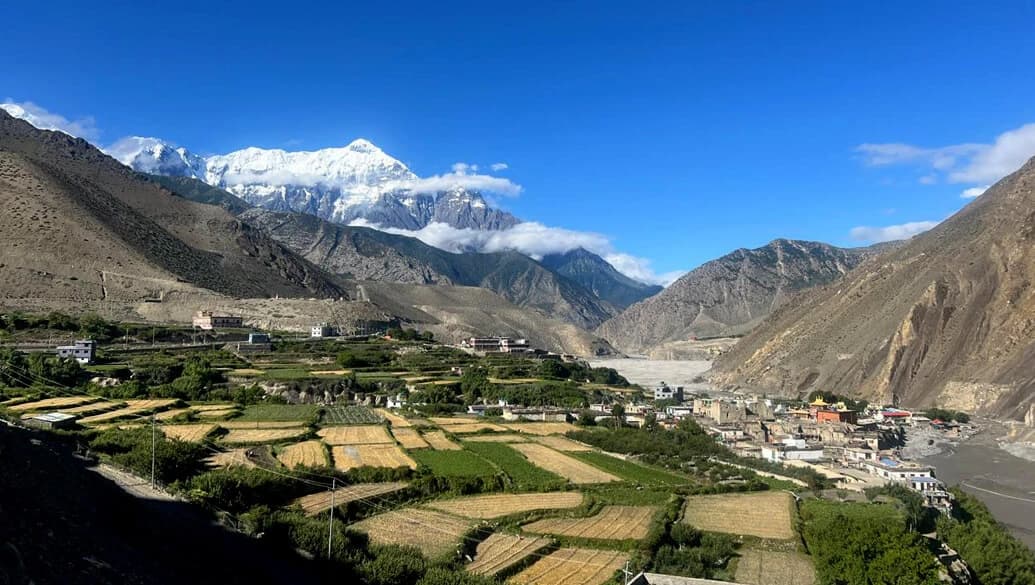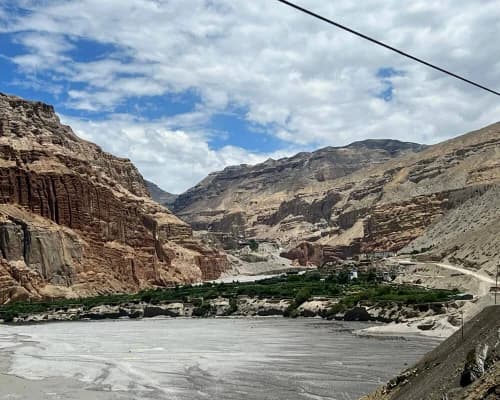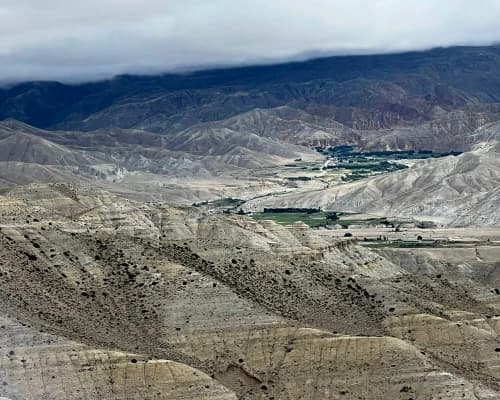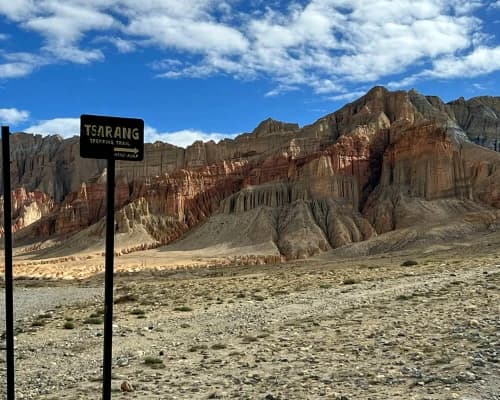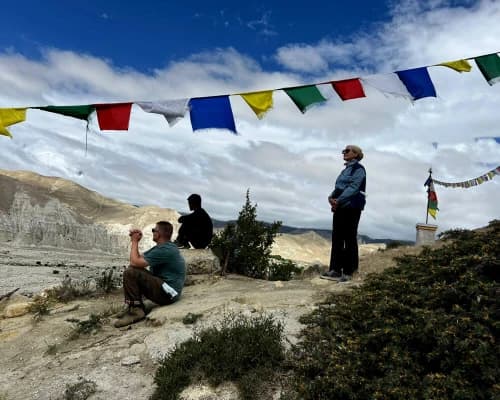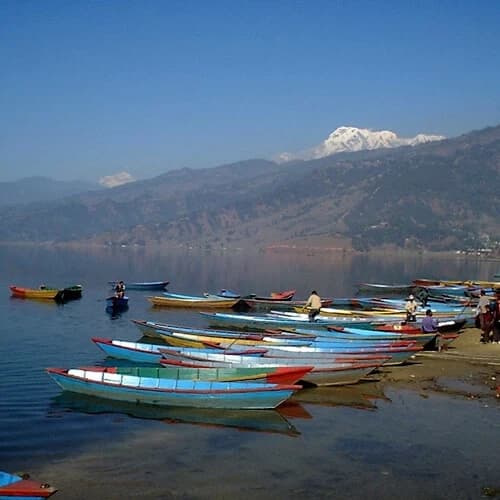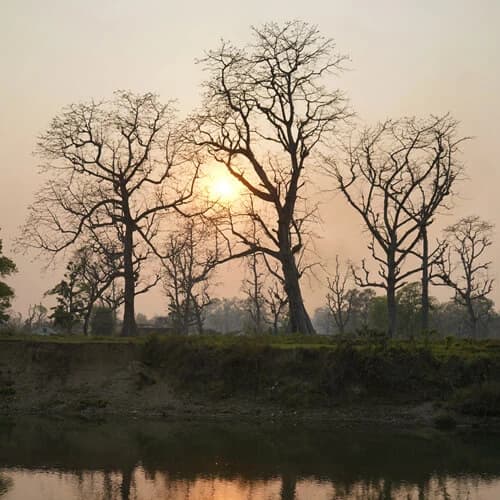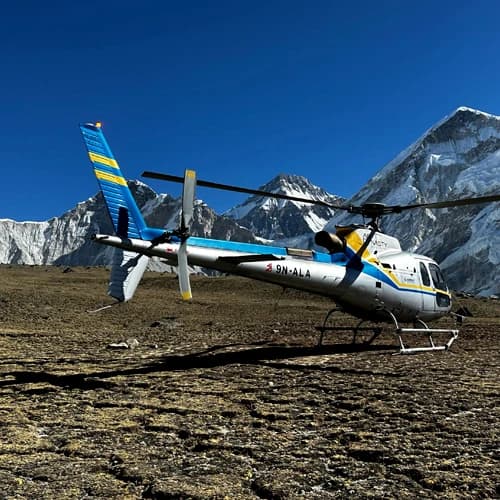Highlights of Upper Mustang Trek Package
- Explore the historical palace in Lo Manthang.
- Learn about the Tibetan-influenced culture in Mustang.
- Visit Ancient monasteries and participate in prayer and meditation with Buddhist monks.
- Hike through desert-like landscapes of the Upper Mustang.
- Interact and immerse yourself in the daily lifestyle of the local people.
- Breathtaking views of Annapurna, Dhaulagiri, and Nilgiri from Jomsom.
Why is the Upper Mustang called the Forbidden Kingdom of Nepal?
Amel Pal established Upper Mustang as the Kingdom of Lo, with Lo Manthang as its capital in 1380. The region has maintained close political and cultural ties to Tibet ever since. Even after the nation adopted secularism and democracy, Upper Mustang still practiced the monarchical system. Upper Mustang is often referred to as the "Forbidden Kingdom" of Nepal because of its restricted access and historical isolation.
Its natural barriers and remote location have preserved its unique Tibetan Buddhist culture, tradition, language, and way of life for centuries. After being annexed by Nepal in 1795, the government restricted foreign access to Upper Mustang until 1992. The initiative was conducted to protect its natural wonder and cultural heritage. This isolation has caused the region to be well-preserved as it gives visitors a rare glimpse of medieval aesthetics untouched by modernity.
Mustang is located at the northern end of the Kali Gandaki Valley. Its rich and complex history makes it one of the most fascinating destinations in Nepal. The trek to Upper Mustang offers an adventurous 17 days itinerary with a picturesque desert-like landscape with beautiful rock formations, ravines, and canyons. This journey is a physical and cultural odyssey, offering you a rare opportunity to explore the hidden corners of Nepal. It is perfect for those who seek an adventure on an off-beat route to one of Nepal's most historical and spiritual destinations.
Hike into Nepal's Little Tibet
The Mustang restricted area trek offers an astonishing journey into Nepal's Little Tibet, where Tibetan culture thrives amidst the mighty Himalayas. The trek leads travelers to the ancient walled city of Lo Manthang. The ancient town is a labyrinth filled with white brick and century-old monasteries serving as a living museum of Nepalese and Tibetan heritage. Your journey starts from Kathmandu to the lake city of Pokhara, the gateway to the Annapurnas. At the domestic airport, Pokhara, you will board a scenic 25-minute flight to Jomsom. We will quickly meet with the trek members upon arrival and head towards Kagbeni. From here, you start trekking in the lower Mustang region, going to the Upper Mustang.
The trail ahead follows the Kali Gandaki Valley through dry and barren land. You will pass by the Tibetan plateau, deep canyons, and dramatic rock formations along the way. Also, trekkers will hike through traditional villages, immersing the locals in Buddhist practices. These encounters offer an immersive experience of a centuries-old way of life that has remained unchanged.
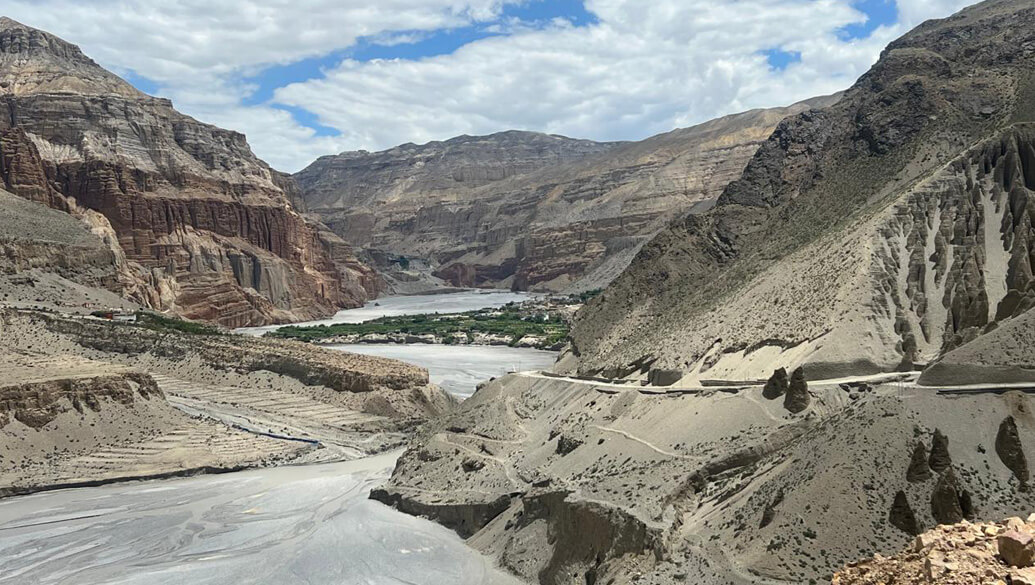
Why Trek the Upper Mustang?
Trekking to the Upper Mustang, Nepal, is a distinctive adventure offering trekkers a blend of breathtaking landscapes and cultural richness. The experience is unlike any other in the Himalayas. To help you better understand why you should trek to the Upper Mustang, we have listed some compelling reasons you should consider.
- Witness ancient architecture, tradition, rituals, and monasteries like Namgyal Monastery.
- Traverse through deep gorges, arid desert-like landscape, and the Tibetan plateau of the Mustang region.
- A less crowded trail due to restricted access has ensured the preservation of culture and the natural environment.
- Visit the infamous sky burial sites of Mustang.
- Explore caves where gurus like Rinpoche have practiced spirituality and meditated.
- There is an aesthetic contrast between the barren landscapes of Mustang and the snow-capped mountains like Dhaulagiri and Annapurna.
- Participate in and experience the Tiji festival in the palace of Lo Manthang. The celebration lasts from 24 to 16 May 2025.
Upper Mustang Trek Difficulty
The Upper Mustang Trek is a moderately complex. It is an ideal balance for trekking enthusiasts who seek a manageable and fulfilling adventure in the Himalayas. Upper Mustang Trek traverses below the elevation of 4,000m, ensuring an accessible, safe, and enjoyable experience. The journey's highest point is at Lo Manthang (3,800m). However, travelers must be cautious of altitude gain and progress gradually with plenty of rest. The trek route covers a distance of approximately 125 kilometers. To complete the expedition, you must walk 6 to 8 hours daily for 12 to 15 days, depending on your pace. The varied terrain along the trail will demand physical flexibility and adaptability as you will make frequent ascents and descents. On the other hand, the weather can also impose specific challenges due to its unpredictable nature. But with proper preparation and gear, you can face any difficulties during this remarkable journey to the ancient Buddhist kingdom.
Is the Upper Mustang Trek Suitable for Beginners?
Trekking to Upper Mustang is suitable for beginners, and you are advised to undertake this adventure with an organized tour operator. This will ensure safety and provide valuable insights into Mustang's unique culture, tradition, and history. With a mindful approach and proper preparation, beginners and experienced trekkers alike could find the trek a rewarding and memorable adventure. If you are new to trekking, prepare adequately to ensure a safe and enjoyable trek experience.
Can I do the Trek Solo?
Travelers cannot commence the Upper Mustang Trek Solo because of the strict Nepalese government regulations. Participants must be a part of a group or be accompanied by a licensed guide to access the necessary permits. You will face legal consequences if you try to enter Upper Mustang without following the rules and regulations. This includes detention and fines. Please follow the laws and support tourism practices. By being a part of a trek operated by a trekking agency, you can experience the stunning landscape and rich culture of Upper Mustang safely and responsibly.
Upper Mustang Trek Cost for 2026/2027
The cost of the Upper Mustang Trek ranges from 1950 USD per person. Additional costs include your expenses and insurance. The package price also depends on group size, service includes, season, and personal expenses. We advise you to plan and budget accordingly for an unforgettable experience during the 2026, 2027 seasons.
